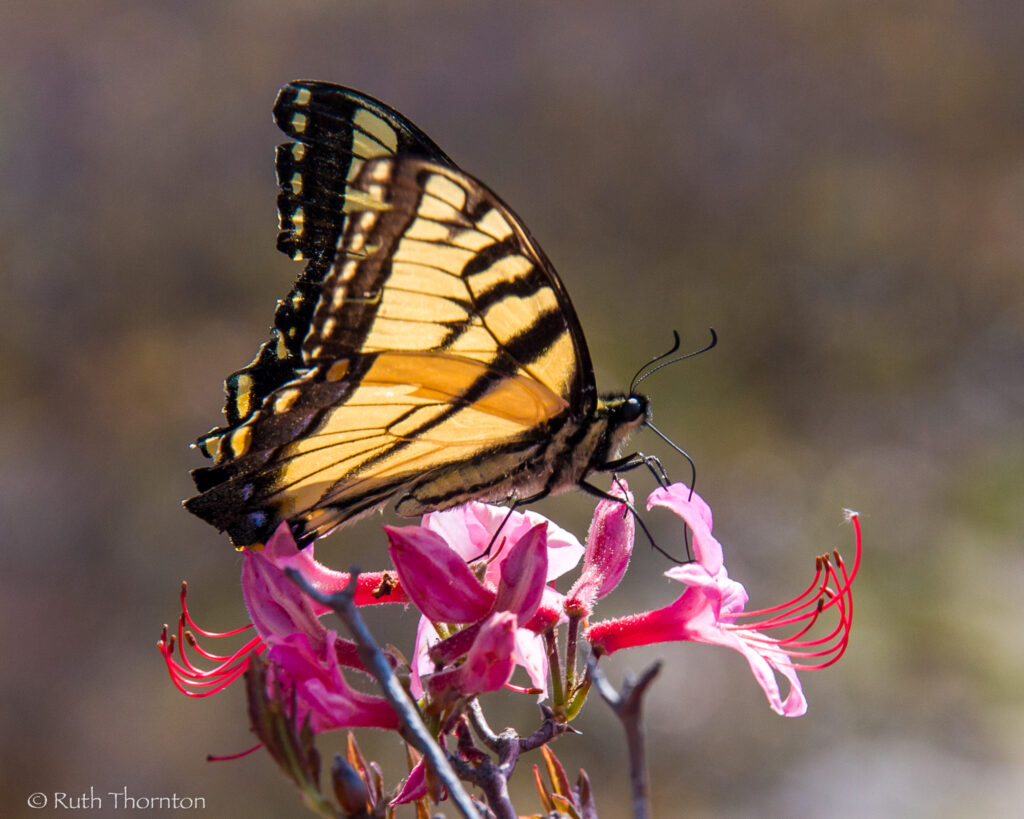
EAST LANSING, MI – Butterflies are among the most beloved insects, with children and adults delighting in the insects’ often colorful and intricate patterns as they flutter from flower to flower.
But butterfly numbers are decreasing and researchers are scrambling to find out why so many are dying.
A series of recent studies is starting to shed light on the mystery, and the results are alarming.
Nation-wide butterfly declines
“Things are not looking good for butterflies,” said Collin Edwards, a quantitative ecologist with the Washington Department of Fish and Wildlife.
Edwards is the lead author of a recent study in the journal Science.
More than 20 scientists contributed to the paper from several universities and research stations, including Michigan State University, Washington State University, University of Nevada, University of California, the Xerces Society for Invertebrate Conservation, North America Butterfly Association, U.S. Geological Survey and U.S. Fish and Wildlife Service.
“There’s been this ongoing conversation in and out of the scientific literature about declines of insects, and there’s been a lot of concern about it,” Edwards said.

But many studies on insects have been criticized for lack of data or focusing on small areas only.
“The goal with this project was to put all that to rest,” he said.
The study compiled all known scientific surveys of butterflies, ending up with records of 12.6 million butterflies from more than 76,000 surveys across the U.S. between 2000 and 2020.
Compared to other insects, butterflies are well studied, with thousands of survey projects by biologists and citizen scientists contributing to a vast store of knowledge about the insect group over decades.
“What it comes down to is how much normal people care about butterflies,” Edwards said. “People really enjoy counting them. They’re charismatic, and they’re easy to spot and identify.”
That made butterflies a prime candidate for a comprehensive, nation-wide study on insects.
“We don’t have that (data) for ants or for beetles,” he said.
The researchers examined the total number of butterflies observed for more than 550 recorded species. They also looked at species-level trends for a subset of around 340 species.
The results were sobering – the number of butterflies across all species declined by 22%. That translates to an annual decline of 1.3%.
When analyzing how individual species fared, the researchers found that 33% of species decreased, and only 3% of species increased in abundance.
“There were about 13 times more species that were declining than increasing,” Edwards said.
Many species decreased drastically – more than 100 species declined by more than 50%, and 22 species declined by more than 90%.
Edwards said he was surprised by how overwhelming and consistent the results were. “I was not expecting the story to be as clean and extreme.”
“No matter what part of the country you looked in, what type of butterfly you were looking at, didn’t matter. Declines were overwhelming,” he said.
The magnitude of the declines varied by location, however. When the scientists divided the U.S. into seven regions, the Pacific Northwest was the only region where butterflies did not decline, instead showing a slight increase in butterfly numbers at 10% over the 20 years.
“But the Southwest had declines of almost 40%,” Edwards said. “Butterflies seem to be doing the worst where it’s the driest and warming the fastest,” he said.
“Our best guess is that the primary causes of these declines are habitat loss, climate change and pesticide use,” Edwards said.
“The Southwest is probably driven more by climate,” he said.
Butterflies in the Midwest declined by 17%. Edwards said another study had found that pesticide use was the biggest driver in that area. “That’s potentially going to be less relevant in regions where there’s less agriculture.”
Edwards said butterflies are a critical part of the food web since they are an important food source for birds and many other animals.
They’re also important pollinators. “There are agricultural crops that are really dependent on butterfly pollinators,” he said.
For example, he said, another study had found that butterfly pollinators were responsible for millions of dollars’ worth of cotton pollination in Texas.
Besides being an important part of nature, Edwards also stressed the aesthetic aspect. “I feel that’s something that everyone values differently, but they’re beautiful and symbolic and important, and people care about them.”
Butterfly declines in the Midwest due to insecticides
Another study took a closer look at the butterfly data from just the Midwest to determine why butterflies were declining there.
“In any paper you read about butterfly or insect decline, it ends with there’s three possible global changes that affect decline – land use, climate change or insecticide use, and that’s where all the other studies leave it,” said Nick Haddad, professor of integrative biology at Michigan State University and one of the study authors.
The study appeared in the journal PLoS ONE. Other institutions involved were the Washington Department of Fish and Wildlife, Iowa State University and Georgetown University.
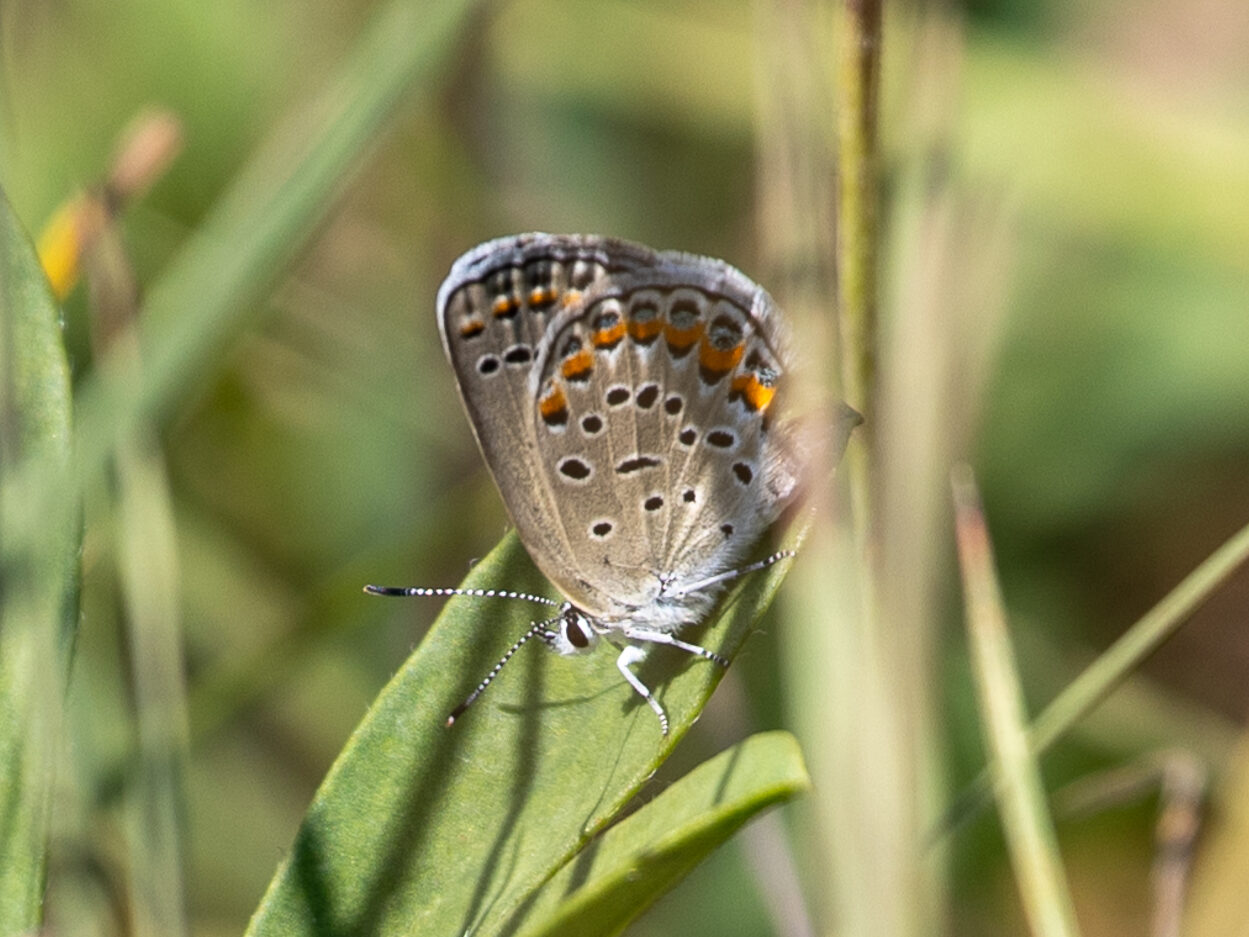
To parse apart how much of the decline is driven by each of the three factors, the authors compiled butterfly data from about 80 counties in five Midwestern states from 1998 to 2014 and overlaid it with land use, climate and pesticide data, including both insecticides and herbicides.
“And the takeaway is that when you compare apples to apples to apples, insecticides rise to the top as the major factor causing butterfly decline” in the Midwest, Haddad said.
Different insecticides had different results, however.
Since farmers apply hundreds of pesticides to soybeans and corn, the study grouped them into three classes: weed control, reactive insect control (an insecticide applied once a pest is found, often sprayed) and preventative insect control (including seed treatments with insecticides).
The study found the declines in both number of individual butterflies and the number of butterfly species were associated strongest with insecticides compared to the other factors.
One class of preventative insecticides with the unwieldy name “neonicotinoids” (pronounced NEE-O-nee-CAUGHT-tee-NOYDS) was particularly associated with the decline in the number of species, according to the study.
Seeds of corn and soybeans are often coated in neonicotinoids, and past studies have found that up to 85% of the insecticide can leach into the environment, according to the study. They are what’s called a “broad-spectrum” insecticide, which means it kills a wide variety of insects.
According to the study, insect control methods have changed in the past 30 years. Some insecticides, like pyrethroids and organophosphates, are sprayed by large tractors or even airplanes, with the potential for the pesticide to be blown to neighboring natural areas.
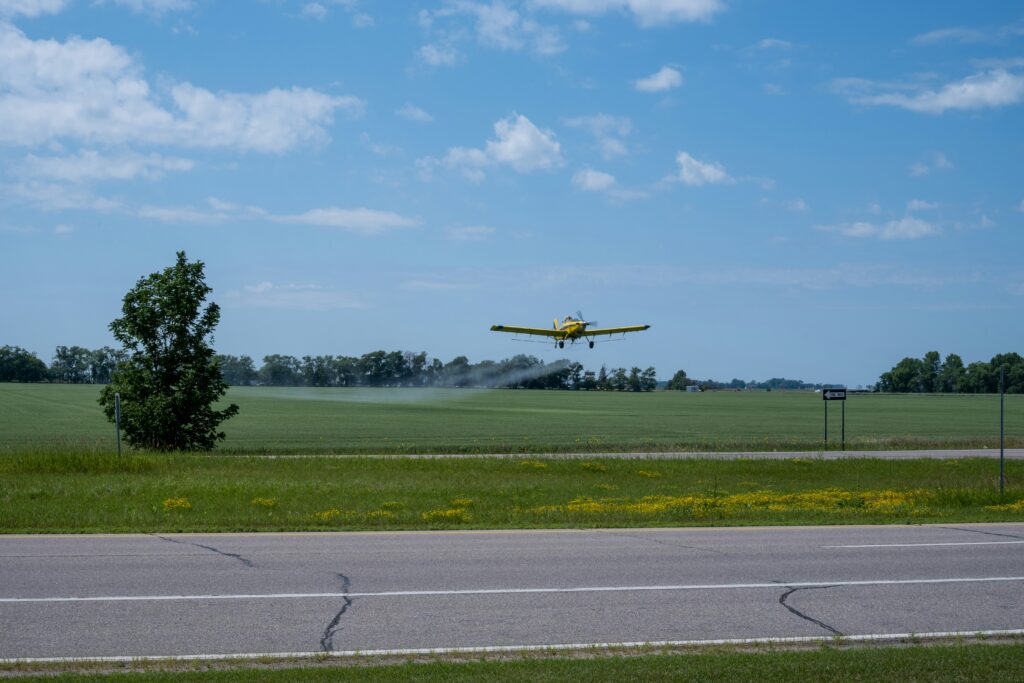
Historically farmers sprayed mostly reactive pesticides once a pest outbreak was spotted, but since around 1995 preventative insecticides were added to farmers’ insect fighting arsenal.
The authors found that declines in the abundance of butterflies that are related to insecticides began around 2003, which coincided with the adoption of neonicotinoids in corn and soybean plantings in the Midwest.
Interestingly, another prophylactic insecticide seed treatment for corn, genetically modified “Bt” treated seed, did not show the same harmful effects on butterflies.
The study did not find a consistent correlation of butterfly numbers with climate change, but year-to-year variations did seem to play a role.
“We know that more moisture in the later summer can increase butterfly numbers, for example,” Haddad said. “But that’s year-to-year changes affected by localized climate conditions, not long-term consistent patterns of rise or decline.”
Different butterfly species also respond in different ways, he said.
Also, their analysis had to stop in 2014 because that’s when pesticide application data was no longer available in the U.S., he said.
“So we’re not actually able to analyze effects of recent intense climate change” compared to pesticide use, he said.
According to the World Meteorological Organization, the past 10 years were the 10 warmest years in the 175-year observational record.
Haddad said he thinks the results of the study are highly transferrable to other insects.
“There’s no reason to think that other insects aren’t responding similarly to how butterflies respond, especially other insect herbivores,” Haddad said. “In that regard, butterflies are a good indicator for all insects.”
Haddad said knowing what is driving the decline in the Midwest allows them to focus on solutions.
“And it kind of seems obvious when you think about the scale of insecticide usage that’s ubiquitous,” he said. “We’re saturating our soils with insecticides even when they’re not needed.”
“Who knows if those insecticides spill over into natural areas,” he said.
Pesticides in remnant prairies
A recent study in the Journal of Insect Conservation, by researchers at the Minnesota Zoo and the University of Minnesota, set out to answer just that question.
The study was spurred by the drastic decline of several species of prairie butterfly over the past two decades, among them the Poweshiek skipperling. It’s found exclusively on prairies and was once common.
The Poweshiek skipperling’s range was once centered in Minnesota, with populations extending north to Manitoba, to the eastern Dakotas and west to Wisconsin, into Iowa, Illinois, Indiana and Michigan.
It’s a small, orange, inconspicuous butterfly that was once so common that butterfly collectors largely ignored them.
“You could call it the most Minnesotan butterfly in the world,” said Erik Runquist, conservation biologist with the Minnesota Zoo. “And it’s gone here.”
The Poweshiek’s populations suddenly plummeted, and it is now found in only two locations at the far extremes of its once expansive range: Manitoba, Canada, and southeast Michigan.
It is often regarded as one of the most imperiled animals in the world and is listed as endangered in the U.S. and Canada.
Disentangling the various potential causes for its decline is tricky, however.
“It’s very important to recognize that there are likely many things that were contributing to their declines, but there are some that are potentially larger drivers than others,” Runquist said.
Pesticides were long suspected to be one of the main causes, so in 2014 he and other researchers started a seven-year study to measure insecticides, herbicide and fungicides in five remnant prairies that had once held the rare butterfly in Minnesota and South Dakota.
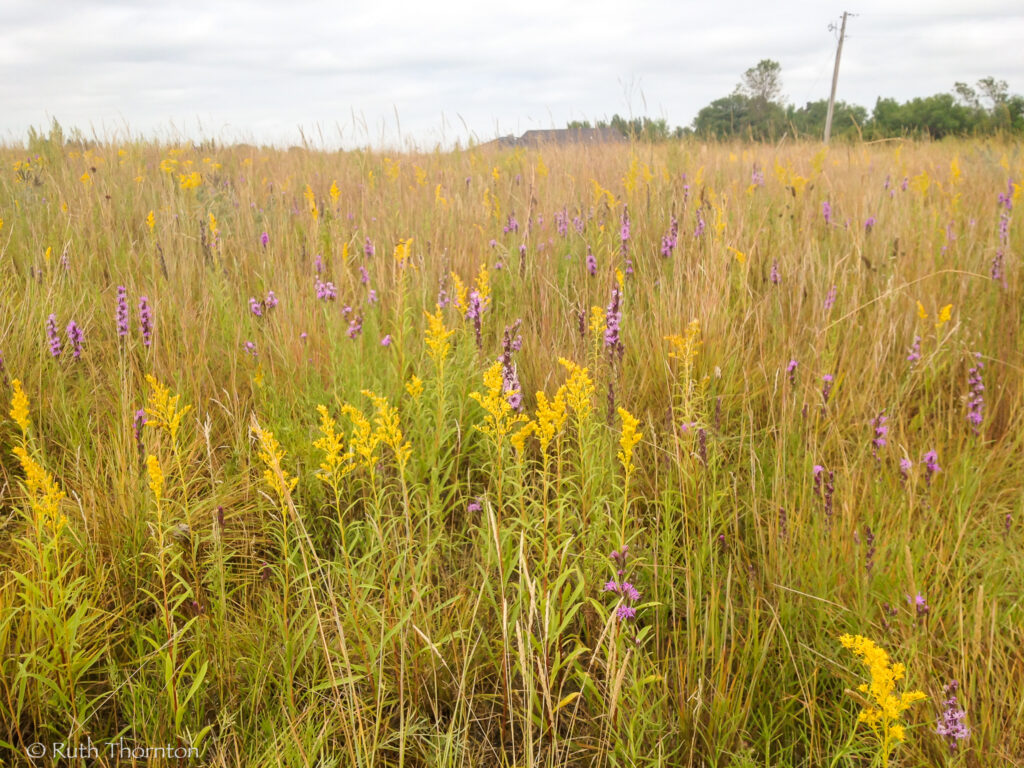
The scientists did not know what to expect in respect to the extent of any contamination. Since pesticides were not applied directly to the prairies, any detected there would have drifted in from neighboring areas.
The prairies came in a range of sizes, from a couple 100 acres to the largest one at 5 miles long by 2 miles wide, he said. Initially all sites were sampled twice a year, shortly after the planting season and again in the late summer.
After the first two years the sites were only sampled in late summer since the early season samples had lower pesticide levels. It was also a cost saving measure, Runquist said.
The researchers took soil and plant clippings and sent them to a lab to be analyzed for hundreds of pesticides.
The results were concerning.
The researchers found that “pesticides are common on the landscape, with almost every sample having multiple kinds of pesticides. And that’s for insecticides, herbicides, fungicides as well,” Runquist said.
“Even inside of a large prairie, we’re still finding those same compounds,” he said.
By far the most frequently detected pesticide, found in more than three quarters of samples, was the insecticide chlorpyrifos. It’s an organophosphate that is commonly applied to control soybean aphids, a common pest of soybeans.
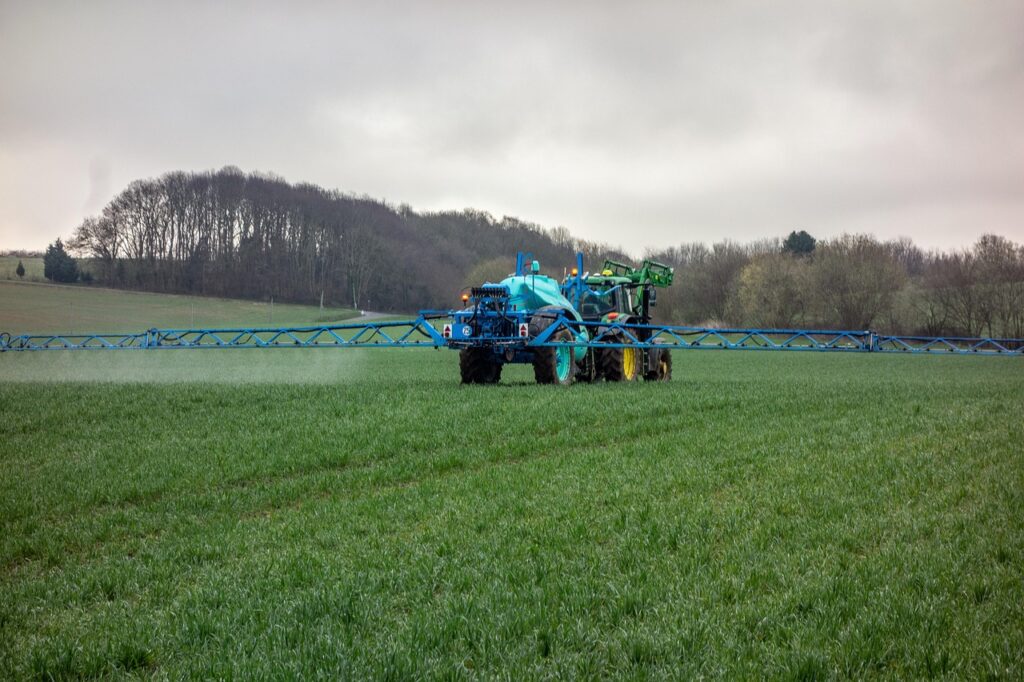
Chlorpyrifos, in use since 1965, has been banned off and on from use on food and animal feed crops in the U.S. over the past several years because of concerns about neurotoxicity, particularly in children, according to the U.S. Environmental Protection agency.
It is currently permitted to be sprayed on 11 crops, including soybeans, apples, strawberries and wheat. It’s banned in the European Union.
Notably, in 2017 the researchers also detected carbofuran, an insecticide that was banned in the U.S. in 2009, in a few samples.
Runquist cautioned that the presence of the pesticides doesn’t necessarily indicate the risk present in the landscape. Since the samples were only taken once or twice a summer on each site, it’s impossible to know when the chemicals were applied or how high the levels were at other times.
They also don’t know at what levels these pesticides are toxic to the Poweshiek skipperling. Researchers would need to expose the butterflies to different levels of the chemical in a lab to determine that.
“That’s a really difficult thing to do when you’re working with a highly endangered butterfly. You don’t have room for error,” he said.
He’s currently performing those experiments on some similar species, and preliminary results indicate that the pesticide levels found in the prairies could potentially harm the caterpillars.
Runquist is now scaling up the study, sampling more sites in additional states, including Wisconsin and Michigan, over three years.
That study is funded through a grant with the Inflation Reduction Act and started last year.
That grant was one of many paused under the new administration a few months ago and for a while he wasn’t sure if they’d be able to continue with the study.
“We actually thought (the study) was not going to survive, but it’s been unlocked,” he said. “So as of now, it’s still ok.”
Runquist stressed that the presence of pesticides does not mean that anybody’s doing anything wrong or illegal. “They’re probably following the rules,” he said.
It just means that pesticide applications that were not applied to the prairies are somehow ending up there from neighboring sites.
Exploring non-chemical control of insect pests
The presence of several insecticides that are commonly used against soybean aphids could be an indication that widespread spraying to control them could be an important factor in the butterfly declines.
The timing of when the spraying started also seems to correspond to when many butterflies, including the Poweshiek skipperling, started declining.
“Soybean aphid invaded from Asia in about the year 2000, or at least that’s when we first saw it in the fields,” said George Heimpel, professor of entomology – the study of insects – at the University of Minnesota.
“It led to a lot more spraying of the soybean crop, which basically, prior to that year in the North Central region, didn’t have any pests. So it never got sprayed at all,” he said.

Heimpel studies the biological control of insect pests.
He said he had tried to find another insect that could act as a natural predator of soybean aphids to help control them naturally, thereby lessening the need for insecticides. But without luck.
Back in the early 2000s, he thought he had found a wasp that looked promising. That wasp preyed upon the aphid in its native Asia – and, importantly, did not attack any native U.S. insects.
But when he brought some of those wasps over to the U.S., they did not survive, for unknown reasons.
In the years following the unsuccessful introduction of the wasp, other insects from Asia arrived in the U.S. on their own and started controlling the soybean aphid numbers to some degree, but not enough to make a large difference in the insecticide use.
The soybean aphid “has remained a very significant pest in Minnesota and parts of the Dakotas, Iowa, Wisconsin,” said Robert Koch, professor and extension specialist at the University of Minnesota.
He said some other states – Michigan and Ohio, among others – have experienced fewer outbreaks over the years. “We’re not exactly sure what’s driving that, but for whatever reason, Minnesota still seems to be kind of a hotbed for soybean aphids.”
Many of the insecticides applied to soybeans are broad spectrum, meaning they kill a lot of other insects, not just aphids.
“Those are those same chemicals that Erik Runquist’s team was finding in some of the prairies,” he said.
“I don’t think they were able to say for sure that it was from soybean aphid applications,” he said.
But the timing of when they detected the pesticides and when soybean aphid applications typically occur suggest a potential correlation.
Koch said some soybean varieties are resistant to the aphids, but those are not widely used.
“The seed companies from which the farmers get their seed, most of them are not carrying this stuff,” he said. “It’s pretty much mainly used in organic production where those farmers don’t have the options to use a lot of the effective insecticides.”
He said using resistant crop varieties is an important tool in integrated pest management and is used in other crop production systems, just not widely used for soybeans.
“Even though the research shows it’s effective,” he said.
Maintaining native habitats for butterflies
Runquist cautioned that the exact reasons for the declines in prairie butterflies are still not clear.
“I think it’s a fair assumption that pesticides at least have played a role in the disappearance of these butterflies,” he said. But just how much of a primary driver they are is still open for debate.
He said it’s also important to address habitat loss, particularly invasive species in native prairies.
Prairie is a “vastly underestimated and ignored ecosystem that is tremendously diverse when the conditions are right,” he said. It “has played a huge role shaping our history and our cultures going back thousands of years.”
“We can’t have prairie butterflies without prairie,” he said.
“If we can figure out how to make better prairie for these butterflies,” he said, “that’s going to be helping lots of other things.”